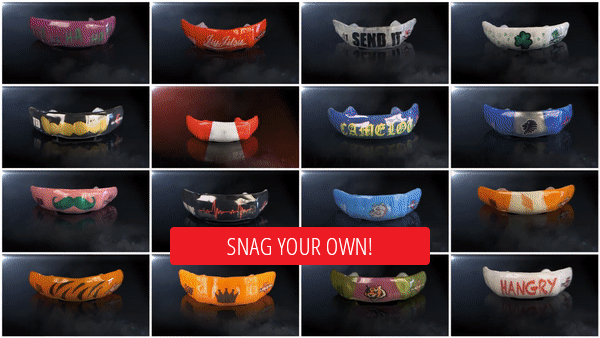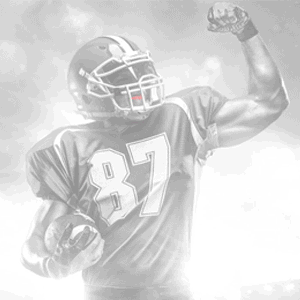Important Answers To Your Most Pressing Mouthguard-Related Questions

With sports fast approaching, it’s time to start thinking about athletic gear for your players.
You’ve got mouthguard questions. We’ve got mouthguard answers:
Q: Any Mouthguard Counts As Approved Protection, Right?
A: The American Dental Association and the Academy for Sports Dentistry recommend a professionally made, properly fitted custom mouthguard for all contact and collision sports. Additionally, the Academy for Sports Dentistry states a custom mouthguard is 1000% more protective than any other type of mouthguard, and the National Athletic Trainers’ Association recommends that athletes to wear “properly fitted mouthguards during sports activities.”
Ultimately, an athlete’s mouthguard should have thicker material in the impact zones — the areas in front of the teeth and under the molars — providing more protection, while being thinner or having no material in areas where protection isn’t needed — behind the back of the front teeth and the roof of the mouth.
Q: How Do Mouthguards Actually Protect Athletes?
A: There are three types of protection:
- Protecting from oral injury, your mouthguard absorbs and disperses direct impact minimizing or eliminating damage
- Protecting from jaw joint trauma, your mouthguard cushions and reduces the amount of shock to the jaw joint as the upper and lower jaw collide
- Protecting from jaw fractures, mouthguards reduce the shock upon impact
Q: How Do I Make Sure My Players Are Comfortable?
A: One of the biggest complaints about mouthguards is the lack of comfort. When a mouthguard doesn’t fit tightly without biting or clenching, there’s a good chance it will end up where it shouldn’t.
Gagging and chewing are products of a poorly fitting mouthguard. If a mouthguard is too high or too long, it causes unwanted material where it isn’t needed.
In order to keep from gagging, mouthguards must avoid the soft palate — the fleshy, flexible part toward the back of the roof of the mouth. That means a mouthguard’s material should stop between the end of the first molar and midway through the second.
The material in the soft palate area doesn’t provide any protection from any injury. Just discomfort.
Q: How Do I Choose The Right Mouthguard?
A: The right mouthguard for your athletes depends on the sport they play. Each sport demands a different level of protection, and some sports and leagues even have specific mouthguard rules and requirements.
Oftentimes, the proper mouthguard for your sport simply comes down to one question: do your players wear a facial shield?
For sports where full facial protection is worn — like ice hockey, football, or men’s lacrosse — you can have a mouthguard with a thinner frontal profile for extra comfort with added protection under the molars against upper and lower jaw collisions, due to the body contact in the sport.
Athletes in non-contact sports like soccer and basketball actually need more protection. Because the face is bare in these sports, you want a mouthguard that features more protection in the front, protecting against heads, shoulders and elbows.
Q: Are Custom Mouthguards Really Worth The Cost?
A: Unlike a broken bone, a broken tooth does not heal; it is a life-long injury, including routine maintenance, appointments, and surgeries. That means the cost to replace just one tooth is approximately $20,000 over your lifetime.
With approximately 5 million teeth knocked out annually during sports and recreational activities, and athletes having a 33-56% chance of receiving an orofacial injury — an injury to the mouth or face — during their playing career, spending a one-time cost of $55 versus $20 seems like a no-brainer.
Spring sports are coming soon. Still have questions about custom mouthguards or proper protection? Learn more at the link below.
Answers To Your Important Questions






